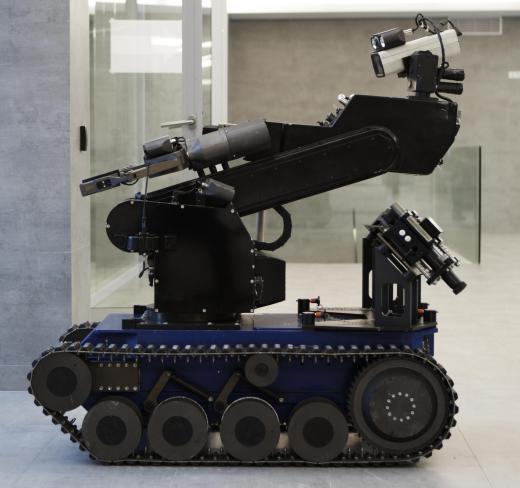A robot manipulator is a robotic arm-like mechanism that is designed to manipulate or move materials, tools, and parts without direct human contact. Most robotic manipulators are lightweight devices that enable humans to interact with objects in an environment in total safety. Sometimes, a material may be hazardous or radioactive, or it may just be located in an inaccessible place. Robot manipulators resemble robotic arms and consist of a number of segments. They are used in industrial applications to effectively perform tasks like assembly, welding, surface finishing, and drilling.
The segmented arms can grip and shift objects under human control. Every commercial robot manipulator consists of two discrete elements — the controller and the manipulator arm. Most of these arms have six degrees of freedom and a proprietary controller. The arms differ from each other in the way the different components are arranged to deliver a certain type of performance. The manipulator's performance is gauged by characteristics such as its precision, payload weight, and speed. Reach and dexterity are also measured when making decisions as to the performance of a robot manipulator.

The reach is a measure of the extent to which the manipulator covers the workspace. The dexterity is a property of the angular displacement of the joints in the arm. The payload weight is specified by the manufacturer, and it also takes into account the payload capacity with differing reach and velocity conditions. The ability of the arm to repeat the movement, or repeatability, is measured to get an accurate idea of the arm's precision. Simulations and motion testing methods are used to verify performance parameters for various applications.

Various link and joint combinations lead to various types of manipulators. The rigid parts that connect joints are called links. The joints enable the links to move, and they may be either linear or rotary. Linear mechanical joints only permit nonrotational motion between adjoining links. Rotary joints, however, allow the connecting links to rotate.

For instance, the cylindrical type of robot manipulator is fabricated with linear joints, which are connected to a base rotary joint. A cartesian robot, or the gantry configuration, consists of linear joints in the arm. A polar configuration consists of a combination of both linear and rotary joints. An articulated robot manipulator, in contrast, has an arm whose links are connected using rotary joints.
Basically, the manipulator can be thought of as a wrist connected to an arm and body. The wrist has a few compact joints and is used to orient the parts. The arm and body are used to manipulate the tools or parts within the work space. The latter can be configured in ways suited to different types of applications.
Many manipulator arms can be fixed to almost any surface. Some manipulators have advanced to the point where the wrists contain gripping mechanical fingers. This allows the robot manipulator to pick up an object as delicate as an egg. Some manipulators also come with advanced software that allow them to be controlled with a computer or integrated with other systems effortlessly.
